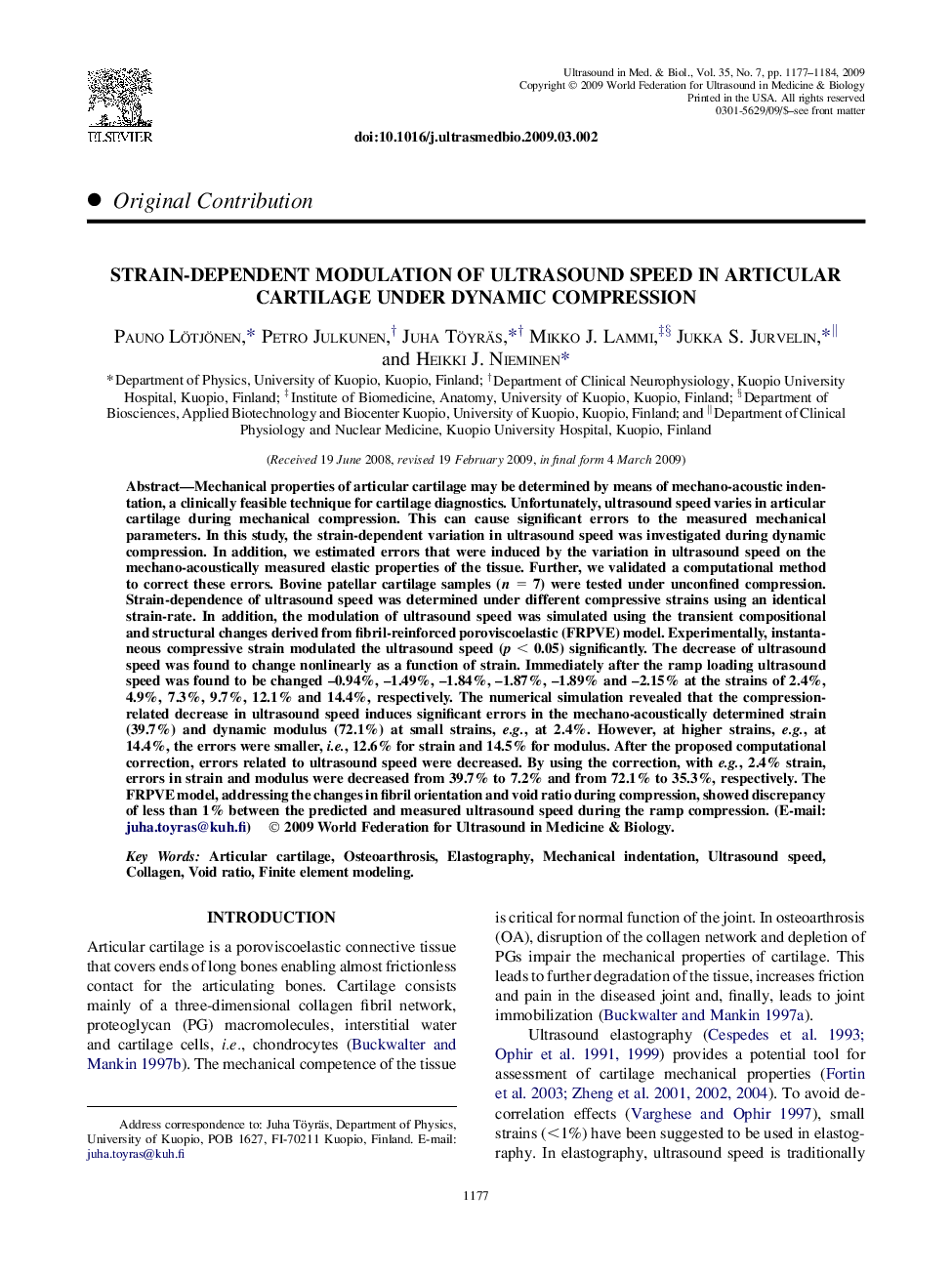| کد مقاله | کد نشریه | سال انتشار | مقاله انگلیسی | نسخه تمام متن |
|---|---|---|---|---|
| 1762341 | 1019686 | 2009 | 8 صفحه PDF | دانلود رایگان |
عنوان انگلیسی مقاله ISI
Strain-Dependent Modulation of Ultrasound Speed in Articular Cartilage Under Dynamic Compression
دانلود مقاله + سفارش ترجمه
دانلود مقاله ISI انگلیسی
رایگان برای ایرانیان
کلمات کلیدی
موضوعات مرتبط
مهندسی و علوم پایه
فیزیک و نجوم
آکوستیک و فرا صوت
پیش نمایش صفحه اول مقاله

چکیده انگلیسی
Mechanical properties of articular cartilage may be determined by means of mechano-acoustic indentation, a clinically feasible technique for cartilage diagnostics. Unfortunately, ultrasound speed varies in articular cartilage during mechanical compression. This can cause significant errors to the measured mechanical parameters. In this study, the strain-dependent variation in ultrasound speed was investigated during dynamic compression. In addition, we estimated errors that were induced by the variation in ultrasound speed on the mechano-acoustically measured elastic properties of the tissue. Further, we validated a computational method to correct these errors. Bovine patellar cartilage samples (n = 7) were tested under unconfined compression. Strain-dependence of ultrasound speed was determined under different compressive strains using an identical strain-rate. In addition, the modulation of ultrasound speed was simulated using the transient compositional and structural changes derived from fibril-reinforced poroviscoelastic (FRPVE) model. Experimentally, instantaneous compressive strain modulated the ultrasound speed (p < 0.05) significantly. The decrease of ultrasound speed was found to change nonlinearly as a function of strain. Immediately after the ramp loading ultrasound speed was found to be changed -0.94%, -1.49%, -1.84%, -1.87%, -1.89% and -2.15% at the strains of 2.4%, 4.9%, 7.3%, 9.7%, 12.1% and 14.4%, respectively. The numerical simulation revealed that the compression-related decrease in ultrasound speed induces significant errors in the mechano-acoustically determined strain (39.7%) and dynamic modulus (72.1%) at small strains, e.g., at 2.4%. However, at higher strains, e.g., at 14.4%, the errors were smaller, i.e., 12.6% for strain and 14.5% for modulus. After the proposed computational correction, errors related to ultrasound speed were decreased. By using the correction, with e.g., 2.4% strain, errors in strain and modulus were decreased from 39.7% to 7.2% and from 72.1% to 35.3%, respectively. The FRPVE model, addressing the changes in fibril orientation and void ratio during compression, showed discrepancy of less than 1% between the predicted and measured ultrasound speed during the ramp compression. (E-mail: juha.toyras@kuh.fi)
ناشر
Database: Elsevier - ScienceDirect (ساینس دایرکت)
Journal: Ultrasound in Medicine & Biology - Volume 35, Issue 7, July 2009, Pages 1177-1184
Journal: Ultrasound in Medicine & Biology - Volume 35, Issue 7, July 2009, Pages 1177-1184
نویسندگان
Pauno Lötjönen, Petro Julkunen, Juha Töyräs, Mikko J. Lammi, Jukka S. Jurvelin, Heikki J. Nieminen,